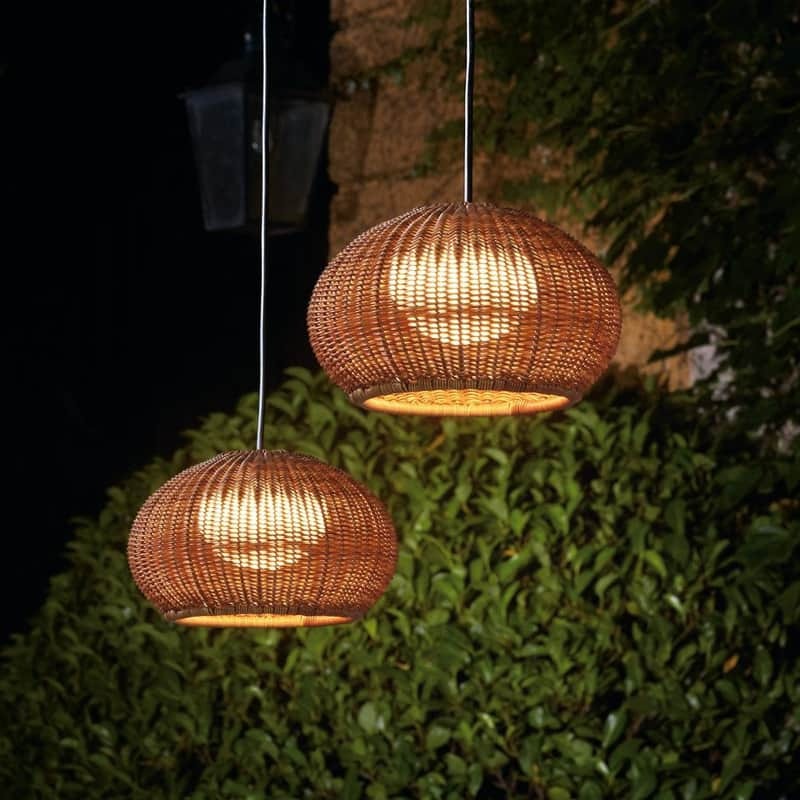| # |
type |
message |
| 1 |  sfPatternRouting sfPatternRouting | Connect sfRequestRoute "sf_captchagd" (/captcha) |
| 2 |  sfPatternRouting sfPatternRouting | Match route "hq_new_detail" (/new-detail/:slug) for /new-detail/natural-rattan-vs-synthetic-rattan-choosing-the-right-material-for-your-space with parameters array ( 'module' => 'pageNews', 'action' => 'detail', 'slug' => 'natural-rattan-vs-synthetic-rattan-choosing-the-right-material-for-your-space',) |
| 3 |  sfFilterChain sfFilterChain | Executing filter "sfRenderingFilter" |
| 4 |  sfFilterChain sfFilterChain | Executing filter "ChangeLanguageFilter" |
| 5 |  sfFilterChain sfFilterChain | Executing filter "sfExecutionFilter" |
| 6 |  pageNewsActions pageNewsActions | Call "pageNewsActions->executeDetail()" |
| 7 |  Doctrine_Connection_Mysql Doctrine_Connection_Mysql | exec : SET NAMES 'UTF8' - () |
| 8 |  Doctrine_Connection_Statement Doctrine_Connection_Statement | execute : SELECT a.id AS a__id, a.title AS a__title, a.alttitle AS a__alttitle, a.header AS a__header, a.body AS a__body, a.image_path AS a__image_path, a.attributes AS a__attributes, a.hit_count AS a__hit_count, a.priority AS a__priority, a.published_time AS a__published_time, a.expiredate_time AS a__expiredate_time, a.meta AS a__meta, a.keywords AS a__keywords, a.author AS a__author, a.other_link AS a__other_link, a.is_active AS a__is_active, a.is_hot AS a__is_hot, a.lang AS a__lang, a.slug AS a__slug, a.category_id AS a__category_id, a.created_by AS a__created_by, a.updated_by AS a__updated_by, a.created_at AS a__created_at, a.updated_at AS a__updated_at FROM ad_article a WHERE (a.is_active = ? AND (a.published_time is null OR a.published_time <= ?) AND (a.expiredate_time is null OR a.expiredate_time >= ?) AND a.slug = ?) - (2, 2024-12-23 19:55:14, 2024-12-23 19:55:14, natural-rattan-vs-synthetic-rattan-choosing-the-right-material-for-your-space) |
| 9 |  sfPHPView sfPHPView | Render "sf_app_dir/modules/pageNews/templates/detailSuccess.php" |
| 10 |  main main | Call "pageNews->executeHotNew()" |
| 11 |  Doctrine_Connection_Statement Doctrine_Connection_Statement | execute : SELECT DISTINCT a3.id FROM ad_article a3 INNER JOIN ad_article_related a4 ON (a4.related_article_id = a3.id) WHERE a4.article_id = ? ORDER BY a3.is_hot DESC, a3.published_time desc LIMIT 5 - (419) |
| 12 |  Doctrine_Connection_Statement Doctrine_Connection_Statement | execute : SELECT a.id AS a__id, a.title AS a__title, a.slug AS a__slug FROM ad_article a INNER JOIN ad_article_related a2 ON (a2.related_article_id = a.id) WHERE a.id IN ('418', '410', '388') AND (a2.article_id = ?) ORDER BY a.is_hot DESC, a.published_time desc - (419) |
| 13 |  sfPartialView sfPartialView | Render "sf_app_dir/modules/pageNews/templates/_hotNew.php" |
| 14 |  Doctrine_Connection_Statement Doctrine_Connection_Statement | execute : SELECT a.id AS a__id, a.title AS a__title, a.alttitle AS a__alttitle, a.header AS a__header, a.body AS a__body, a.image_path AS a__image_path, a.attributes AS a__attributes, a.hit_count AS a__hit_count, a.priority AS a__priority, a.published_time AS a__published_time, a.expiredate_time AS a__expiredate_time, a.meta AS a__meta, a.keywords AS a__keywords, a.author AS a__author, a.other_link AS a__other_link, a.is_active AS a__is_active, a.is_hot AS a__is_hot, a.lang AS a__lang, a.slug AS a__slug, a.category_id AS a__category_id, a.created_by AS a__created_by, a.updated_by AS a__updated_by, a.created_at AS a__created_at, a.updated_at AS a__updated_at FROM ad_article a WHERE (a.id = ?) LIMIT 1 - (418) |
| 15 |  Doctrine_Connection_Statement Doctrine_Connection_Statement | execute : SELECT a.id AS a__id, a.title AS a__title, a.alttitle AS a__alttitle, a.header AS a__header, a.body AS a__body, a.image_path AS a__image_path, a.attributes AS a__attributes, a.hit_count AS a__hit_count, a.priority AS a__priority, a.published_time AS a__published_time, a.expiredate_time AS a__expiredate_time, a.meta AS a__meta, a.keywords AS a__keywords, a.author AS a__author, a.other_link AS a__other_link, a.is_active AS a__is_active, a.is_hot AS a__is_hot, a.lang AS a__lang, a.slug AS a__slug, a.category_id AS a__category_id, a.created_by AS a__created_by, a.updated_by AS a__updated_by, a.created_at AS a__created_at, a.updated_at AS a__updated_at FROM ad_article a WHERE (a.id = ?) LIMIT 1 - (410) |
| 16 |  Doctrine_Connection_Statement Doctrine_Connection_Statement | execute : SELECT a.id AS a__id, a.title AS a__title, a.alttitle AS a__alttitle, a.header AS a__header, a.body AS a__body, a.image_path AS a__image_path, a.attributes AS a__attributes, a.hit_count AS a__hit_count, a.priority AS a__priority, a.published_time AS a__published_time, a.expiredate_time AS a__expiredate_time, a.meta AS a__meta, a.keywords AS a__keywords, a.author AS a__author, a.other_link AS a__other_link, a.is_active AS a__is_active, a.is_hot AS a__is_hot, a.lang AS a__lang, a.slug AS a__slug, a.category_id AS a__category_id, a.created_by AS a__created_by, a.updated_by AS a__updated_by, a.created_at AS a__created_at, a.updated_at AS a__updated_at FROM ad_article a WHERE (a.id = ?) LIMIT 1 - (388) |
| 17 |  sfPHPView sfPHPView | Decorate content with "sf_app_dir/templates/layout.php" |
| 18 |  sfPHPView sfPHPView | Render "sf_app_dir/templates/layout.php" |
| 19 |  main main | Call "moduleMenu->executeMainMenu()" |
| 20 |  Doctrine_Connection_Statement Doctrine_Connection_Statement | execute : SELECT v.id AS v__id, v.name AS v__name, v.address AS v__address, v.image_path AS v__image_path, v.link AS v__link, v.priority AS v__priority, v.is_active AS v__is_active, v.is_home AS v__is_home, v.lang AS v__lang, v.description AS v__description, v.slug AS v__slug, v.portal_id AS v__portal_id, v.meta AS v__meta, v.keywords AS v__keywords, v.parent_id AS v__parent_id, v.level AS v__level, v.lat AS v__lat, v.log AS v__log, v.parameter_ids AS v__parameter_ids, v.list_image AS v__list_image, v.email AS v__email, v.msisdn AS v__msisdn, v.created_by AS v__created_by, v.updated_by AS v__updated_by, v.created_at AS v__created_at, v.updated_at AS v__updated_at FROM vtp_products_category v WHERE ((v.parent_id = ? OR v.parent_id is null) AND v.is_active = 1) ORDER BY v.priority desc LIMIT 50 - () |
| 21 |  Doctrine_Connection_Statement Doctrine_Connection_Statement | execute : SELECT v.id AS v__id, v.name AS v__name, v.address AS v__address, v.image_path AS v__image_path, v.link AS v__link, v.priority AS v__priority, v.is_active AS v__is_active, v.is_home AS v__is_home, v.lang AS v__lang, v.description AS v__description, v.slug AS v__slug, v.portal_id AS v__portal_id, v.meta AS v__meta, v.keywords AS v__keywords, v.parent_id AS v__parent_id, v.level AS v__level, v.lat AS v__lat, v.log AS v__log, v.parameter_ids AS v__parameter_ids, v.list_image AS v__list_image, v.email AS v__email, v.msisdn AS v__msisdn, v.created_by AS v__created_by, v.updated_by AS v__updated_by, v.created_at AS v__created_at, v.updated_at AS v__updated_at FROM vtp_products_category v WHERE (v.parent_id = ? AND v.is_active = 1) ORDER BY v.priority desc LIMIT 50 - (59) |
| 22 |  Doctrine_Connection_Statement Doctrine_Connection_Statement | execute : SELECT v.id AS v__id, v.name AS v__name, v.address AS v__address, v.image_path AS v__image_path, v.link AS v__link, v.priority AS v__priority, v.is_active AS v__is_active, v.is_home AS v__is_home, v.lang AS v__lang, v.description AS v__description, v.slug AS v__slug, v.portal_id AS v__portal_id, v.meta AS v__meta, v.keywords AS v__keywords, v.parent_id AS v__parent_id, v.level AS v__level, v.lat AS v__lat, v.log AS v__log, v.parameter_ids AS v__parameter_ids, v.list_image AS v__list_image, v.email AS v__email, v.msisdn AS v__msisdn, v.created_by AS v__created_by, v.updated_by AS v__updated_by, v.created_at AS v__created_at, v.updated_at AS v__updated_at FROM vtp_products_category v WHERE (v.parent_id = ? AND v.is_active = 1) ORDER BY v.priority desc LIMIT 50 - (70) |
| 23 |  Doctrine_Connection_Statement Doctrine_Connection_Statement | execute : SELECT v.id AS v__id, v.name AS v__name, v.address AS v__address, v.image_path AS v__image_path, v.link AS v__link, v.priority AS v__priority, v.is_active AS v__is_active, v.is_home AS v__is_home, v.lang AS v__lang, v.description AS v__description, v.slug AS v__slug, v.portal_id AS v__portal_id, v.meta AS v__meta, v.keywords AS v__keywords, v.parent_id AS v__parent_id, v.level AS v__level, v.lat AS v__lat, v.log AS v__log, v.parameter_ids AS v__parameter_ids, v.list_image AS v__list_image, v.email AS v__email, v.msisdn AS v__msisdn, v.created_by AS v__created_by, v.updated_by AS v__updated_by, v.created_at AS v__created_at, v.updated_at AS v__updated_at FROM vtp_products_category v WHERE (v.parent_id = ? AND v.is_active = 1) ORDER BY v.priority desc LIMIT 50 - (71) |
| 24 |  Doctrine_Connection_Statement Doctrine_Connection_Statement | execute : SELECT v.id AS v__id, v.name AS v__name, v.address AS v__address, v.image_path AS v__image_path, v.link AS v__link, v.priority AS v__priority, v.is_active AS v__is_active, v.is_home AS v__is_home, v.lang AS v__lang, v.description AS v__description, v.slug AS v__slug, v.portal_id AS v__portal_id, v.meta AS v__meta, v.keywords AS v__keywords, v.parent_id AS v__parent_id, v.level AS v__level, v.lat AS v__lat, v.log AS v__log, v.parameter_ids AS v__parameter_ids, v.list_image AS v__list_image, v.email AS v__email, v.msisdn AS v__msisdn, v.created_by AS v__created_by, v.updated_by AS v__updated_by, v.created_at AS v__created_at, v.updated_at AS v__updated_at FROM vtp_products_category v WHERE (v.parent_id = ? AND v.is_active = 1) ORDER BY v.priority desc LIMIT 50 - (72) |
| 25 |  Doctrine_Connection_Statement Doctrine_Connection_Statement | execute : SELECT v.id AS v__id, v.name AS v__name, v.address AS v__address, v.image_path AS v__image_path, v.link AS v__link, v.priority AS v__priority, v.is_active AS v__is_active, v.is_home AS v__is_home, v.lang AS v__lang, v.description AS v__description, v.slug AS v__slug, v.portal_id AS v__portal_id, v.meta AS v__meta, v.keywords AS v__keywords, v.parent_id AS v__parent_id, v.level AS v__level, v.lat AS v__lat, v.log AS v__log, v.parameter_ids AS v__parameter_ids, v.list_image AS v__list_image, v.email AS v__email, v.msisdn AS v__msisdn, v.created_by AS v__created_by, v.updated_by AS v__updated_by, v.created_at AS v__created_at, v.updated_at AS v__updated_at FROM vtp_products_category v WHERE (v.parent_id = ? AND v.is_active = 1) ORDER BY v.priority desc LIMIT 50 - (73) |
| 26 |  Doctrine_Connection_Statement Doctrine_Connection_Statement | execute : SELECT v.id AS v__id, v.name AS v__name, v.address AS v__address, v.image_path AS v__image_path, v.link AS v__link, v.priority AS v__priority, v.is_active AS v__is_active, v.is_home AS v__is_home, v.lang AS v__lang, v.description AS v__description, v.slug AS v__slug, v.portal_id AS v__portal_id, v.meta AS v__meta, v.keywords AS v__keywords, v.parent_id AS v__parent_id, v.level AS v__level, v.lat AS v__lat, v.log AS v__log, v.parameter_ids AS v__parameter_ids, v.list_image AS v__list_image, v.email AS v__email, v.msisdn AS v__msisdn, v.created_by AS v__created_by, v.updated_by AS v__updated_by, v.created_at AS v__created_at, v.updated_at AS v__updated_at FROM vtp_products_category v WHERE (v.parent_id = ? AND v.is_active = 1) ORDER BY v.priority desc LIMIT 50 - (74) |
| 27 |  Doctrine_Connection_Statement Doctrine_Connection_Statement | execute : SELECT v.id AS v__id, v.name AS v__name, v.address AS v__address, v.image_path AS v__image_path, v.link AS v__link, v.priority AS v__priority, v.is_active AS v__is_active, v.is_home AS v__is_home, v.lang AS v__lang, v.description AS v__description, v.slug AS v__slug, v.portal_id AS v__portal_id, v.meta AS v__meta, v.keywords AS v__keywords, v.parent_id AS v__parent_id, v.level AS v__level, v.lat AS v__lat, v.log AS v__log, v.parameter_ids AS v__parameter_ids, v.list_image AS v__list_image, v.email AS v__email, v.msisdn AS v__msisdn, v.created_by AS v__created_by, v.updated_by AS v__updated_by, v.created_at AS v__created_at, v.updated_at AS v__updated_at FROM vtp_products_category v WHERE (v.parent_id = ? AND v.is_active = 1) ORDER BY v.priority desc LIMIT 50 - (75) |
| 28 |  Doctrine_Connection_Statement Doctrine_Connection_Statement | execute : SELECT v.id AS v__id, v.name AS v__name, v.address AS v__address, v.image_path AS v__image_path, v.link AS v__link, v.priority AS v__priority, v.is_active AS v__is_active, v.is_home AS v__is_home, v.lang AS v__lang, v.description AS v__description, v.slug AS v__slug, v.portal_id AS v__portal_id, v.meta AS v__meta, v.keywords AS v__keywords, v.parent_id AS v__parent_id, v.level AS v__level, v.lat AS v__lat, v.log AS v__log, v.parameter_ids AS v__parameter_ids, v.list_image AS v__list_image, v.email AS v__email, v.msisdn AS v__msisdn, v.created_by AS v__created_by, v.updated_by AS v__updated_by, v.created_at AS v__created_at, v.updated_at AS v__updated_at FROM vtp_products_category v WHERE (v.parent_id = ? AND v.is_active = 1) ORDER BY v.priority desc LIMIT 50 - (97) |
| 29 |  Doctrine_Connection_Statement Doctrine_Connection_Statement | execute : SELECT v.id AS v__id, v.name AS v__name, v.address AS v__address, v.image_path AS v__image_path, v.link AS v__link, v.priority AS v__priority, v.is_active AS v__is_active, v.is_home AS v__is_home, v.lang AS v__lang, v.description AS v__description, v.slug AS v__slug, v.portal_id AS v__portal_id, v.meta AS v__meta, v.keywords AS v__keywords, v.parent_id AS v__parent_id, v.level AS v__level, v.lat AS v__lat, v.log AS v__log, v.parameter_ids AS v__parameter_ids, v.list_image AS v__list_image, v.email AS v__email, v.msisdn AS v__msisdn, v.created_by AS v__created_by, v.updated_by AS v__updated_by, v.created_at AS v__created_at, v.updated_at AS v__updated_at FROM vtp_products_category v WHERE (v.parent_id = ? AND v.is_active = 1) ORDER BY v.priority desc LIMIT 50 - (108) |
| 30 |  Doctrine_Connection_Mysql Doctrine_Connection_Mysql | query : SELECT a.id AS a__id, a.name AS a__name, a.description AS a__description, a.content AS a__content, a.image_path AS a__image_path, a.is_active AS a__is_active, a.is_hot AS a__is_hot, a.lang AS a__lang, a.category_id AS a__category_id, a.slug AS a__slug, a.meta_keyword AS a__meta_keyword, a.meta_description AS a__meta_description, a.price AS a__price, a.created_by AS a__created_by, a.updated_by AS a__updated_by, a.created_at AS a__created_at, a.updated_at AS a__updated_at FROM ad_product a ORDER BY a.category_id DESC LIMIT 10 - () |
| 31 |  sfPartialView sfPartialView | Render "sf_app_dir/modules/moduleMenu/templates/_mainMenu.php" |
| 32 |  main main | Call "moduleMenu->executeContentFooter()" |
| 33 |  sfPartialView sfPartialView | Render "sf_app_dir/modules/moduleMenu/templates/_contentFooter.php" |
| 34 |  main main | Call "pageProduct->executeInquiryNowForm()" |
| 35 |  sfPartialView sfPartialView | Render "sf_app_dir/modules/pageProduct/templates/_inquiryNowForm.php" |
| 36 |  sfWebResponse sfWebResponse | Send status "HTTP/1.1 200 OK" |
| 37 |  sfWebResponse sfWebResponse | Send header "Content-Type: text/html; charset=utf-8" |










 config
config view
view logs
logs 14848.0 KB
14848.0 KB 190 ms
190 ms 18
18



